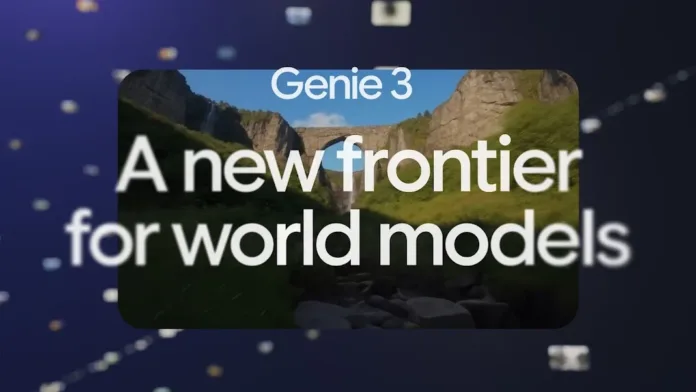Table of Contents
Genie 3: The Major Leap Toward Artificial General Intelligence
When Google DeepMind introduced its first AI world model, the tech world took notice. Today, with the release of Genie 3, that initial step has become a giant leap toward a future once thought to be decades away. This next-generation AI model simulates rich, lifelike environments, providing an essential new training ground for robots, autonomous vehicles, and intelligent agents.
Genie 3 isn’t just a research project; it’s a practical move by Google to develop the very tools required for artificial general intelligence (AGI). And continue from By teaching AI system
At Squaredtech.co, we see Genie 3 as a practical move by Google to develop artificial general intelligence tools with real-world applications. By teaching AI systems to interact with complex environments virtually, Genie 3 brings us closer to machines that can think, plan, and act more like humans.
Read More About Our Article of Google AI Futures Fund Backs Startups Building with DeepMind Tech Published on May 13th, 2025 SquaredTech
While Genie 3 isn’t ready for public release, Google says it will play a key role in the development of autonomous AI agents capable of performing broad tasks independently—something traditional models like ChatGPT or AlphaGo can’t do on their own.
Genie 3 Creates Real-Time Environments From Text Prompts
Genie 3 is built to simulate real-life physics and environments instantly. Users provide a text prompt, and the system generates a high-quality digital world in seconds. This simulation can include anything from walking around a mountain lake to skiing down a slope or operating in a warehouse.
According to Google, these simulations go far beyond basic graphics—they include physical dynamics that make them useful for training machines like robots. For example, a warehouse simulation generated by Genie 3 could help a robot learn how to move objects, avoid people, or complete tasks with minimal errors. These simulations give AI systems the experience they need—without using real-world resources.
As an editor at Squaredtech.co, we see Genie 3 as a breakthrough. Most large language models rely solely on internet data. Genie 3 gives AI systems a chance to experience virtual environments, which can accelerate their development and make them far more capable in real applications.
This ability to simulate real-world conditions instantly could also support autonomous vehicle development, smart warehouse automation, and other robotics projects. A robot trained in Genie 3 could enter a real warehouse already familiar with the environment—cutting down on both time and risk.
Why AGI Needs World Models Like Genie 3 to Thrive
Artificial general intelligence means AI systems that can perform any task a human can. That includes reasoning, adapting, and acting across different situations. Right now, most AI tools are limited. They can write essays, answer questions, or recognize objects—but they can’t function autonomously in complex settings.
Google DeepMind believes world models like Genie 3 are key to solving this. Instead of just reacting to inputs, AI systems can use Genie 3 to plan, move, and test ideas in virtual spaces. They don’t just predict—they interact. This is what separates AGI from today’s narrow AI.
Google has also created a virtual agent named SIMA that performs tasks in video game worlds. SIMA, like Genie 3, is built to move beyond simple answers and start taking meaningful action.
At Squaredtech, we see Genie 3 as part of a larger strategy. While Google hasn’t released the full model, its simulations already rival those created by Google’s Veo 3 video model. But unlike Veo 3, Genie 3 environments run for minutes—not just seconds.
Genie 3 doesn’t just serve machines. Humans can also explore simulations for training or experience. Users can walk through digital environments and change them in real time. For instance, someone could ask the AI to add deer to a snowy slope, and the system would update the simulation instantly.
Still, Google says Genie 3 has limitations. It hasn’t shared a release timeline, and the model remains in development. But the direction is clear: AI is no longer just reading text—it’s experiencing and responding to simulated environments.
Squaredtech Takeaway: AI Is Learning to Think With Experience
Artificial general intelligence has always required more than data—it needs experience. Genie 3 is Google’s solution to that problem. It gives AI systems a way to interact with digital environments as a training ground. These environments have real physics, real outcomes, and allow AI to practice before acting in real-world situations.
Andrew Rogoyski from the University of Surrey supports this view. He says giving AI the ability to “be embodied” in a virtual world could add a critical layer of intelligence. By exploring simulations, AI systems can grow beyond what static training data allows.
As Squaredtech has reported across AI developments, world models like Genie 3 are a necessary foundation for achieving true artificial general intelligence. They let AI move, test, and adjust. This gives systems a deeper understanding of cause and effect—essential for human-level decision-making.
Google also believes that large language models (LLMs) benefit from these simulated environments. LLMs are good at planning, but they struggle with real-world execution. By pairing them with world models like Genie 3, AI systems can plan and act.
Google Genie 3 and the AGI Road Ahead
Artificial general intelligence is no longer just theory. Tools like Genie 3 are proving that AI systems can learn through experience. While it’s not available to the public yet, Genie 3 is already shaping how future AI agents will train, grow, and function.
At Squaredtech.co, we’re watching this development closely. Genie 3 shows how quickly AI is advancing. As models become more immersive and reactive, the line between machine learning and real intelligence begins to blur.
We believe Genie 3 is more than a model—it’s a milestone. It signals a shift from AI that reads and writes to AI that acts and adapts. Google’s decision to keep the model private suggests more testing and refinement is coming. But the tech is here, and the implications are massive.
Squaredtech Summary:
- Genie 3 creates real-world simulations from text prompts instantly.
- It helps train robots, autonomous systems, and virtual agents.
- Only a few models can do what Genie 3 does—simulate with real physics.
- Genie 3 moves AI closer to true artificial general intelligence.
- It’s not yet public, but it’s already influencing AI development strategy.
Keep following Squaredtech.co for updates on Genie 3, AGI, and future AI simulation models. We cover what’s real, what’s next, and what it means for tech leaders, developers, and users around the world.
Let us know if you’d like a comparison between Genie 3 and other AI world models—or a follow-up once Genie 3 becomes public.
Stay Updated: Artificial Intelligence


